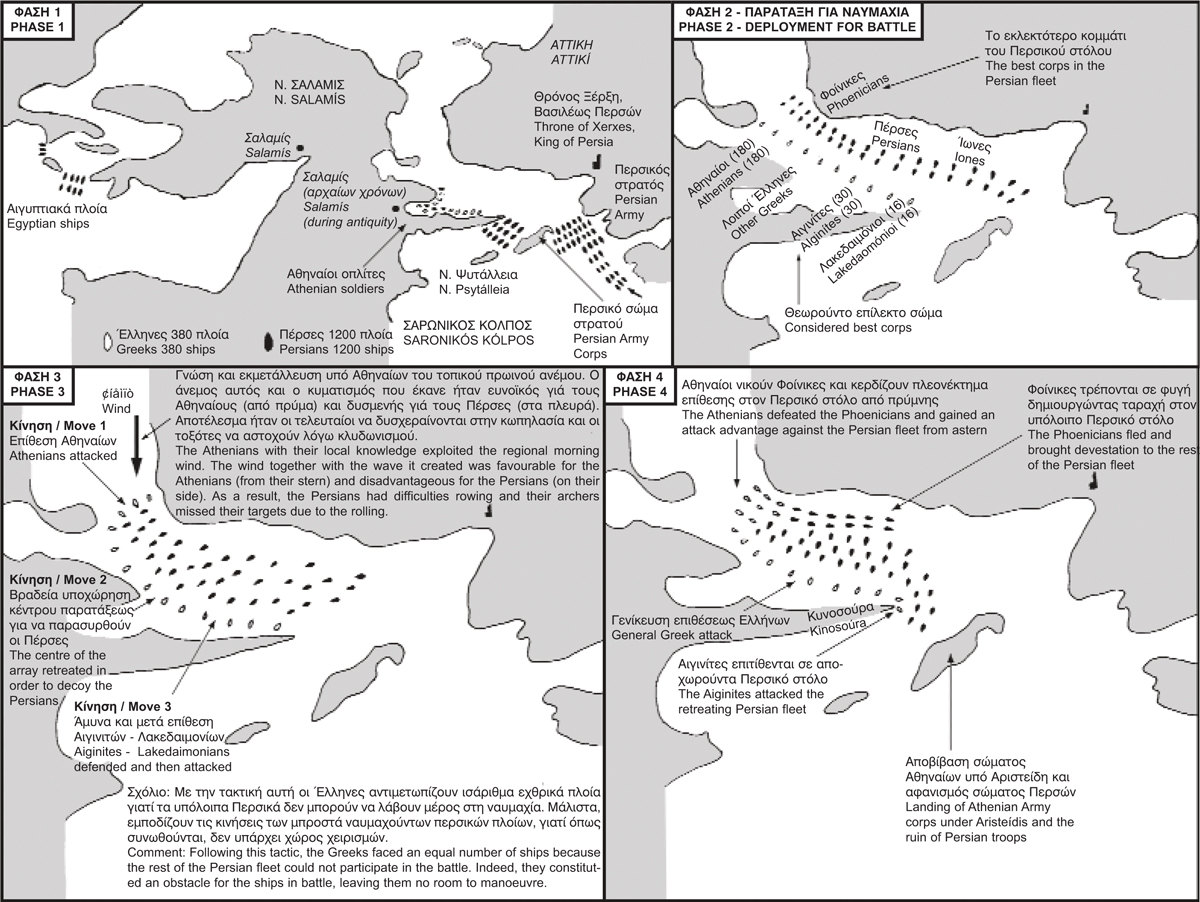
According to the geographer Strávon, the city of Salamína was situated near Kolónes during the Homeric times, where today ruins remain of the ancient tower. This city was the seat of King Telamón. During the Classic Years the city of Salamína was located in Selínia. Ruins of the ancient harbour and the Tomb of Salaminomáchon (Salaminian Fighters) still exist.
The ancient Greeks reported that, further to the reign of Ásopos (his daughters were Salamína and Aígina) and his successors, the island was occupied by settlers from Aígina lead by Telamóna, who fathered Aías and Téfktros (Argonautic Expedition). These two brothers took part in the Trojan Wars with 12 ships but later Téfktros abandoned the island and went to Cyprus where he founded the wonderful city of “Salamína”.
Later, the great grandson of Telamóna freely donated the island to the Athenians and to honour him, he was made a citizen of Athens. From then on, the island’s fortune lay together with that of Athens, up until the time when the Athenians devastated Salamína considering its inhabitants “guilty of treachery”, after an alliance was made with the Macedonians during the war of Athens – Macedonia. There is very little information forthcoming about the island from the following centuries. It is worth mentioning that the city was completely ruined in 170 AD.
The city of Salamina as we know it, was introduced in the Byzantine period as a settlement for the hosting of refugees.
The Sea Battle of Salamis: It is recognised as the sea battle of all centuries and ended with a Greek victory. The sea battle took place in the 22nd of September 480 BC. The opponents were:
– Persian fleet under King Xerxes: 1200 ships – 300,000 soldiers.
– Hellenic fleet under the Lakedemonian Evriviádis: 380 ships (180 under the Athenian Themistoklís) – 85,000 soldiers.
The Persians had conquered the land right up to Athens. All the women and children of Athens were evacuated to Salamína. During the war councils, the Peloponnesian generals wanted the sea battle to take place close to the Isthmós of Kórinthos (Corinth Canal). The Athenian Themistoklís insisted on the advantages of the strait of Salamína, to such an extent that he secretly sent his tutor to contact Xerxes to deliberately lie to him that the Greeks were planning to leave. So Xerxes’ actions hurried the conflict of the two fleets.
The tragic poet Aischílos who took part in the sea battle, describes: “At the crack of dawn, after the enthusiastic admonitions of Themistoklís, the Greeks started to go onboard the ships, singing the wonderful paean (triumphant hymn): ‘Oh children of the Hellenes, go, free our country, free the children, the women, the land of our Gods and our fathers, our ancestors’ graves, as now is the time to fight for everything’.” This is the amazing difference in the psychological preparation of the Persians, who were fighting to conquer! Let us not forget that the Athenian citizens considered it an honour to be an oarsman in the war ships and they would dedicate their horses’ bridles to Goddess Athena at the Parthenon.

The Greek victory was to such an extent that the Persian moral collapsed and they withdrew conclusively from all sea battles against the Greeks. This ensured the general victory of Greece.
A special celebration of the city of Salamína is the “Feast of the Fisherman” during the full moon in August. You can dance, eat fish and drink wine for free.




